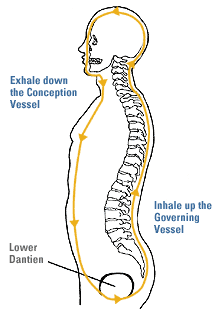For the past few sessions we've been developing techniques based on the principle of Advaitya - or "without separation".
::
Three stages are identified in cultivating this state of awareness. I feel they're best used as guidelines - do not think that you advance by achieving 'higher' states. A firm foundation is essential to true advancement.
- Dharana - concentration; focusing the awareness through the sense and mental faculties while silencing the activities of the mind and emotions external to the focus.
- Dhyana - meditation; tranquil contemplation of the focus, cessation of the 'I'-process integrating the perceiver, perceived, and act of perception.
- Samadhi - dwelling in superconscious states
The transition between these states is gradual and follows from residing in the preceding state. That is to say, once you begin with and sustain concentration from moment to moment, you will gradually slide into meditation. Entering dhyana and samadhi tends to occur fleetingly at first. There is no need to get frustrated or discouraged - simply return to the object of concentration and begin again. With time and practice this method quickly becomes easier and consciousness is absorbed into the states.
::
To begin with, use simple and emotionally neutral objects to focus on. Concentrate on all their attributes while giving equal attention to the perceiver (you and your awareness) and the dynamic of perception. Observe the interaction of 3 these elements in a concentrated fashion and establish yourself in dharana. From then on it's a question of time, patience, and vigilance. When you observe your overall state of awareness changing, relax and go with it. From these objects, we've moved on to using the breath as a focal 'object'. This is a subtle approach to opening up another space of techniques which we'll examine soon.



